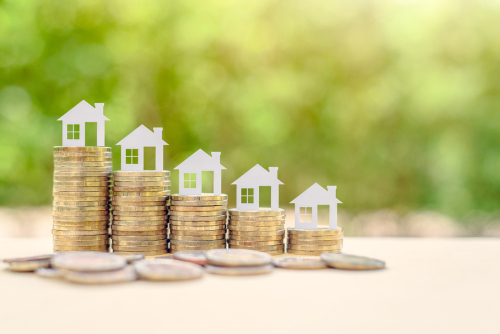

If you have a fixed-rate home mortgage, you pay the exact same amount each month. But did you know that the amount of principal you pay toward the balance of your loan changes from month to month? This is called amortization and it is a method of distributing the interest and principal over the course of a loan so that it is completely paid off by the end of the loan term. Understanding how it works could help save you plenty of interest on your mortgage.
How does it work?
When you agree to buy a house at a certain price, in reality, you will end up paying way more than that price to your lender over the life of the loan. That is because you are charged interest by the lender in order to make the deal worth their while. To make sure that you do not end up with a giant interest payment at the end of your mortgage, lenders create amortization schedules to include both interest and principal into your monthly payments. However, to make sure they recoup more of their money at the beginning of the loan, your initial payments will end up going almost entirely towards interest. Gradually over time, more of your payment will go towards principal until by the last few years of payments, you are contributing almost nothing in interest.
Here is an example: Say you purchase a home for with a 30-year fixed-rate mortgage of $250,000 with a 4% interest rate. Over the life of the loan you will pay $179,674 in interest. Your monthly payment will be roughly $1,193. The first payment you make will include $833 for interest charges and only $360 for principal. After that payment, your loan balance decreases to $249, 640 and the interest is recalculated for that amount. Your next payment will be made up of an $832 charge for interest and a $361 contribution to principal. The balance will continue to shift every month until your very last payment will include $1,149 for principal and just $4 in interest.
Refinancing
Every time you refinance your loan you reset your amortization schedule and you will start paying a majority in interest each month. This can make it harder to pay off your mortgage as fast as if you had not refinanced. When you refinance, make sure that the interest savings you get is worth having to start paying a lot of upfront interest again.
Larger Payments
If you are interested in paying off your loan faster without refinancing into a shorter mortgage, you can start making larger payments or a few extra payments each year. This amount can be applied to the loan principal, which will reduce your loan balance and force the interest to be recalculated for future payments. This can save you thousands of dollars in interest and shave years off your loan.
Understanding how your principal and interest is calculated can help you manage your mortgage loan debt better. It can guide you as you consider when and if to refinance as well as whether to try to pay off your loan faster. In the end, understanding mortgage amortization can help you save money over time.
